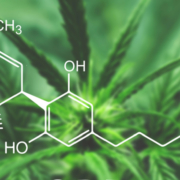An update on the advancements in the treatment of agitation in Alzheimer’s disease
Authors:
Assaf Shelef, Yoram Barak, Uri Berger, Diana Paleacu, Shelly Tadger, Igor Plopsky, Yehuda Baruch
Published in Expert Opinion on Pharmacotherapy
April 2017
Abstract
Neuropsychiatric symptoms (NPS) in Alzheimer’s disease (AD) are associated with significant negative outcomes for patients and their caregivers. Agitation, one of the most distressing NPS, lacks safe and effective long term interventions. Nonpharmacological interventions are suggested as first-line treatment, but aren’t effective for every patient, resulting in pharmacological interventions for some patients, consisting of off-label use of antipsychotics, sedative/hypnotics, anxiolytics, acetylcholinesterase inhibitors, memantine, and antidepressants; where efficacy doesn’t necessarily outweigh associated risks. Areas covered: Gains in understanding neurobiological mechanisms underlying agitation have fueled several recent clinical trials. This article updates our review published in 2014. Comprehensive literature search for published articles from January 2014 to December 2016 evaluating pharmacologic interventions for agitation in AD was done. A review of several clinical trials was completed: dextromethorphan/quinidine, scyllo-inositol, brexpiprazole, prazosin, cannabinoids, citalopram, escitalopram, pimavanserin, ITI-007, ORM-12741 show promise in treating agitation. Expert opinion: Neurobiological findings, innovative trials designs, statistical approaches, and preliminary paths for regulatory agency acceptance have re-ignited the area of pharmacological treatment of NPS. Though further research is needed to fully determine the safety, tolerability and efficacy of these treatments, the mission to find effective treatments for neuropsychiatric symptoms such as agitation in patients with dementia is well underway.
DOI: 10.1080/14656566.2017.1307340
PAYWALL
Citation:
Porsteinsson AP, Antonsdottir IM. An update on the advancements in the treatment of agitation in Alzheimer’s disease. Expert Opinion on Pharmacotherapy. 2017;18(6):611-620. doi:10.1080/14656566.2017.1307340.

